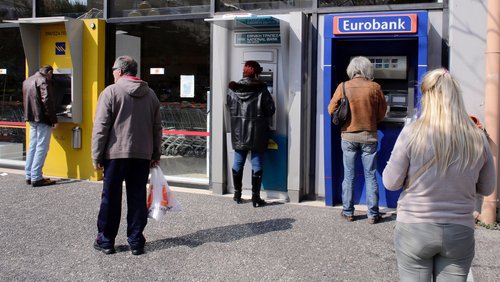Both at home and abroad, Germany has been accused in many quarters of what is commonly referred to in Germany as “wage dumping”, or paying excessively low wages. However, a look at the manufacturing industry – which is at the heart of international exchange and competition – shows no evidence that wages have been kept at an excessively low level.

No “wage dumping” in Germany
In 2013, labour costs in western Germany’s manufacturing industry amounted to 38.77 euros per employee hour. This put the region in sixth place in a comprehensive IW comparison of 44 countries; its labour costs were over one-fourth higher than the average for the advanced industrialised countries. For Germany as a whole, the cost disadvantage was one-fifth, since labour costs in eastern Germany were 38 percent lower, at 23.93 euros, than in the western region of the country. The argument might be made, of course, that Germany is a highly productive country that can afford high labour costs. Indeed, in 2013 foreign industry was 15 percent less productive, on average, than German industry. However, this productivity advantage cannot compensate for Germany’s high labour costs. As a result, unit labour costs in Germany are considerably above average. Foreign countries, overall, have a 10-percent advantage – largely accounted for by unit labour costs in the United States, which are more than one-fifth lower than in Germany. Unit labour costs were found to be six percent lower in the European Union and four percent lower in the euro zone.
There is also no evidence that Germany is depressing wages excessively. In the past, the charge was precisely the opposite. In 1999, the highly regarded British magazine The Economist referred to Germany as the “sick man of Europe”, suggesting that its weak economy posed a danger to the still-young euro. Between 1999 and 2003, little happened to improve Germany’s competitive position. But rapidly growing unemployment had such a severe impact on the country that Gerhard Schröder, Germany’s chancellor at the time, introduced a series of reforms known as Agenda 2010 in the spring of 2003. At the same time, labour and management agreed on a wage policy designed to promote employment.
This, coupled with corporate restructuring, triggered a substantial increase in productivity, with only a moderate increase in labour costs. Between 2003 and 2007 unit labour costs dropped by more than 14 percent. Germany was no longer the “sick man of Europe”, but rather the powerhouse of the euro zone. Then came the turbulent years of the economic crisis, and since 2011 unit labour costs in the industrial sector have risen for three years in a row. Such costs in Germany’s manufacturing industry were 13 percent higher in 2014 than in the pre-crisis year 2007. Nor does Germany do particularly well relative to other countries – between 1991 and 2013, unit labour costs increased by 12 percent in Germany, while they declined somewhat abroad, whether calculated in national currency or in euros (see chart).
Christoph Schröder: Produktivität und Lohnstückkosten der Industrie im internationalen Vergleich
IW-Trends
More on the topic

Non-performing loans: Herculean task for the Eurozone
The big banks in the Eurozone are still sitting on non-performing loans worth over half a trillion Euros. Especially in Cyprus, Greece and Italy bank failures are likely, as shown in a study of the German Economic Institute (IW). If the banks were to be made ...
IW